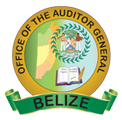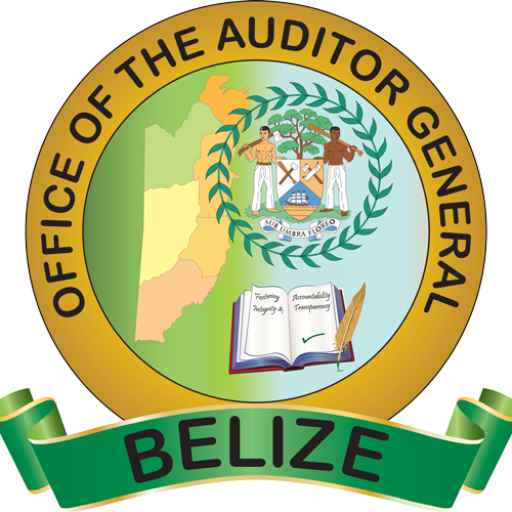In the Office of the Auditor General of Belize the Audit Process involves numerous steps that can be broadly grouped in the following three phases.
- Planning
- Executing
- Reporting
PLANNING
Audit plans, which are approved by the Auditor General, are comprised of a series of procedures the Auditor intends to undertake during his audit examination. In the course of developing the audit plan the Auditor will follow six steps.
-
-
-
- Understanding the Audit Entity to be audited. That is the Ministry, department or Statutory Body.
- Materiality
- Risk Assessment
- Audit Scope, Objective and Audit Approach
- Sampling
- Audit Plan Preparation
-
-

- Understanding the Audit Entity
- Materiality
- Risk Assessment
- Audit Scope, Objective and Audit Approach
- Sampling
- Audit Plan Preparation
The description of an auditee is normally a documented compilation of information on the entity, which serves as a framework or reference to the auditor when planning, executing, and reporting the audit. The description should comply with guidelines in the auditing standards, and generally accepted auditing principles. (GAAP)
A major input into the audit plan is information on the audit entity. The information gathered on the entity should give an understanding of the entity’s business, its systems and methods and operations, its strengths and weakness of the sector in which it operates.
Knowledge of the audit entity is important because it facilitates many aspects of the audit such as:
- Assessing inherent risk
- Determining material levels
- Obtaining sufficient understanding of internal control
- Identifying the nature and sources of audit evidence
- Designing audit procedures including those pertaining to management’s accounting estimates.
- Understanding the substance of transactions
- Assessing whether sufficient appropriate audit evidence has been obtained
- Assessing the appropriateness of management’s selection and application of accounting principles
- Evaluating management’s overall financial statement presentation
Auditing standards require auditors to consider materiality in determining the nature, timing and extent of auditing procedures and in evaluating the results of those procedures. Therefore, it is imperative for auditors to have a thorough knowledge of the concept of materiality and it’s application to the audit process.
International Standards on Auditing No.25 defines Materiality as follows:
- Information is material if its omission or misstatement could influence the economic decisions of users taken on the basis of the financial statement.
- Materiality depends on the size of the item error judged in the particular circumstances of its omissions or misstatement. Thus, materiality provides a threshold or cut off point rather than being a primary qualitative characteristic which information must have if it is to be useful.
It is important for auditors to set levels of acceptable errors so that financial statements are materially free of misstatements that can affect the decisions of users of these financial statements in a negative way. Also, during the evaluation of audit findings, the auditor should assess whether the incorrect statements are material and to what extent they could influence the reporting opinion.
Risk in auditing means that the auditor accepts some level of uncertainty in performing the audit. Assessing audit risk is one of the most important steps in ensuring that the auditor will gather sufficient, appropriate audit evidence at minimum cost. It entails Control Risk, Inherent Risk, and Detection Risk
Audit risk is the probability that an auditor will give an inappropriate opinion on the financial statement and that the audit may have allowed material errors to remain undetected in the accounts. The worst manifestation of this risk is giving an unqualified opinion because of material misstatements the auditor failed to discover. The concept of audit risk also applies to individual account balances and disclosures that a material misstatement is not discovered in an account or in a note to a Financial Statement
An Auditor needs to be very confident that the conclusion reached at the end of the audit is the right one. Therefore the more competent the evidence that is gathered, audit risk is reduced.
Inherent risk is the probability that material misstatement have occurred in transactions entering the accounting system used to develop the financial statements. This indicates the susceptibility of the financial statement to material misstatements, assuming no internal controls.
Control risk is the probability that the client’s internal control activities will fail to detect material misstatements that may enter the accounting system. Control systems are the policies and procedures that management establishes to protect the organization against fraud, irregularities and errors. They must be preventive, detective or corrective in nature.
Detection risk is the probability that audit procedures will fail to produce evidence of material misstatements that may have entered the accounting system and have not been detected and corrected by the client’s control activities.
The audit objective and scope are established in accordance with the SAI of Belize Standards. The audit objectives are the goals or aims the auditor would achieve at the end of the audit. The objective of conducting a financial audit would be to form an audit opinion. The audit scope gives the framework in which the auditor conducts the audit. The determination of the audit approach would primarily be based on the reliance that can be placed on the control within the entity’s system.
An auditor may need to carry out audit sampling in order to gather sufficient audit evidence. This is a very important tool in the audit evidence gathering stage.
The AICPA’s Auditing Standard Board in SAS 39 defines audit sampling as “The application of an audit procedure to less than 100% of the items within an audit balance or class of transaction for the purpose of evaluating some characteristic of the balances or class.
Sampling provides a valid defensible methodology in determining the measurable or quantifiable characteristics or features of the whole population. The objective of sampling is to assemble data on a specified number of observations, which is representative of the large group about which more information, description, statements, etc. needs to be made. The sample must represent the entire population in order to be valid.
The use of sampling in auditing is expressed to users of the financial statements by the phrase” an audit includes examining on a test basis” which contained in the scope paragraph.
An Audit plan is a formal document, which provides guidance for the whole audit process to achieve the audit objectives in an efficient and effective way.
An Audit plan serves as a guide on how goals and objectives will be accomplished and as a medium for monitoring progress of the audit. It helps to achieve high quality audit work in an economic, efficient and effective manner. It also identifies the factors that influence how the audit is executed. A good audit plan must be sufficiently detailed to guide how the audit is executed.
4,010 total views, 3 views today

